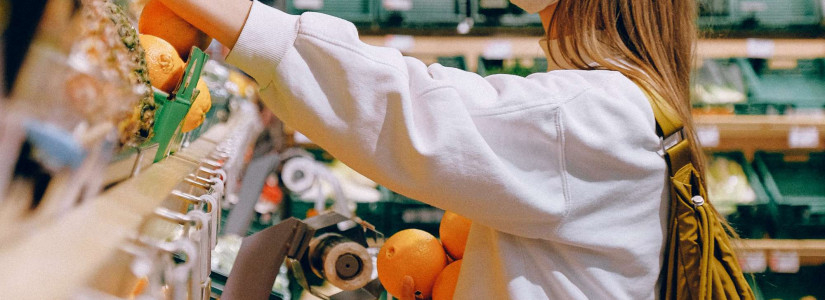Free Food At School For Your Kids
You're barely making ends meet; in fact, most of the time you aren't. The rent has to get paid to keep a roof over your head, and you really need to keep the electricity going. Phone and internet? They seem like a luxury and they are priced that way, but you need them and so do your kids.
Those dollars you send with the kids for school lunches could be useful somewhere else! You've heard of free meals at school, but do your kids qualify? Would the other kids laugh at them? Would they get the same food everyone else does?
At the start of school every year, your child receives an application for free or reduced price meals. If you didn't get one or threw it out because you didn't think you qualified, you can ask the teacher for another one. You can apply at any time during the school year. However, you don't even have to apply if you already get TANF (Temporary Aid to Needy Families), a SNAP (food assistance)card, or, in some cases, unemployment compensation.
Qualifications for free school meals in most areas is a family income up to 30% of the Federal Poverty Level. For a family of two, that's $406 weekly; for three, $511, for 4, $609. If you make more than this, you can still qualify for reduced price meals if your weekly income is less than $578 (2 in family), $727 for three, $835 for four. Even that would leave some extra money to help with those bills!
If you live a district where at least 40% of the children in the school qualify for free meals, you may not even have to send in a form or qualify. According to the Community Eligibility Provision, in districts that decide to apply this program everyone's meals are free. The district benefits by having much less paperwork to deal with, so many choose to take this route if they can. Ask whether your school is among them!
Nationwide, 72% of children in public schools are eligible for free or reduced-price lunches. Of course, that may not be the case in your child's school, where much of the population may be middle-income or above. The same meals are served to all students, but it's possible for others to find out, in one way or another, that your child is being helped with lunch costs.
In some schools it would be more noticeable if a child was paying for lunch! In the rarefied world of school, whichever the majority is doing will be the one that seems "right"; the other will seem "weird". If your child doesn't like being one of the "poor kids who get free meals", be matter of fact about it. Remind him or her that everyone's different in some way from everyone else and that if someone teases another student for getting free meals, that person has a problem that's bigger than a low income!
On the other hand, you may be able to learn from other parents, from your children, or by observing in the school cafeteria whether the school itself makes students' status obvious. Sometimes for convenience, schools may resort to methods such as separate lines for free and paid meals, though usually they attempt to disguise this distinction in some way. If you see a problem, always feel free to take it to the school. Most administrators want to minimize problems and are happy to take constructive suggestions from concerned parents.
All lunches, both paid and free, have to follow the same federal nutritional guidelines. Those have been criticized in the last few years for including too many items that were unfamiliar to the children and were just thrown away. The lunch program was also charged with containing so few calories that children, especially older ones, still felt quite hungry even if they ate the whole meal. These standards have been changed recently in hopes of lowering waste and satisfying appetites. You can be sure, though, that if your child qualifies for free meals at school, he or she will be given balanced meals with enough protein and vitamins to meet his or her needs.
Those dollars you send with the kids for school lunches could be useful somewhere else! You've heard of free meals at school, but do your kids qualify? Would the other kids laugh at them? Would they get the same food everyone else does?
At the start of school every year, your child receives an application for free or reduced price meals. If you didn't get one or threw it out because you didn't think you qualified, you can ask the teacher for another one. You can apply at any time during the school year. However, you don't even have to apply if you already get TANF (Temporary Aid to Needy Families), a SNAP (food assistance)card, or, in some cases, unemployment compensation.
Qualifications for free school meals in most areas is a family income up to 30% of the Federal Poverty Level. For a family of two, that's $406 weekly; for three, $511, for 4, $609. If you make more than this, you can still qualify for reduced price meals if your weekly income is less than $578 (2 in family), $727 for three, $835 for four. Even that would leave some extra money to help with those bills!
If you live a district where at least 40% of the children in the school qualify for free meals, you may not even have to send in a form or qualify. According to the Community Eligibility Provision, in districts that decide to apply this program everyone's meals are free. The district benefits by having much less paperwork to deal with, so many choose to take this route if they can. Ask whether your school is among them!
In some schools it would be more noticeable if a child was paying for lunch! In the rarefied world of school, whichever the majority is doing will be the one that seems "right"; the other will seem "weird". If your child doesn't like being one of the "poor kids who get free meals", be matter of fact about it. Remind him or her that everyone's different in some way from everyone else and that if someone teases another student for getting free meals, that person has a problem that's bigger than a low income!
On the other hand, you may be able to learn from other parents, from your children, or by observing in the school cafeteria whether the school itself makes students' status obvious. Sometimes for convenience, schools may resort to methods such as separate lines for free and paid meals, though usually they attempt to disguise this distinction in some way. If you see a problem, always feel free to take it to the school. Most administrators want to minimize problems and are happy to take constructive suggestions from concerned parents.
All lunches, both paid and free, have to follow the same federal nutritional guidelines. Those have been criticized in the last few years for including too many items that were unfamiliar to the children and were just thrown away. The lunch program was also charged with containing so few calories that children, especially older ones, still felt quite hungry even if they ate the whole meal. These standards have been changed recently in hopes of lowering waste and satisfying appetites. You can be sure, though, that if your child qualifies for free meals at school, he or she will be given balanced meals with enough protein and vitamins to meet his or her needs.












